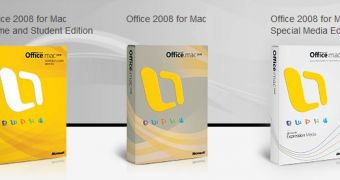At the end of the past week, Microsoft acknowledged a security issue with the installer of the recently launched Office 2008 for Mac. The Redmond company's confirmation came on the heels of independent reports related to the security flaw in Office 2008. Due to a glitch in the installer of the latest Office for Mac iteration on Mac OS X machines with more than one account, the second user of the computer is also granted ownership of the files.
"The issue is that our installer is incorrectly granting ownership of the files to a particular local user as it installs them, so that if your Mac actually has a second local user and that user is not an administrator on your Mac, they could modify your Office 2008 install. The issue does not expose the Office 2008 install to modifications by any networked user account or to any local account other than the second one created on your Mac," stated Erik Schwiebert, Microsoft Office for Mac Development Lead.
Schwiebert promised that Microsoft would have a solution in place within several days. Until then, users of Office 2008 for Mac have a workaround they can turn to. Schwiebert in fact provided users with an alternative method to resolving the ownership issue and the adjacent security problem. On top of this, MacBU is currently hard at work on delivering an update to Office 2008 that will fix the installer. The update will be served automatically through the Microsoft's AutoUpdate tool, but will also come as a standalone download.
Here are the steps necessary to fix ownership of the Office 2008 for Mac files, courtesy of Schwiebert: "Log in to the computer by using a user account with administrator privileges. In /Applications/Utilities, open Terminal. In the Terminal window, type the following command on one line, and then press RETURN."
"/Applications/Microsoft Office 2008"
"/Library/Automator"
"/Library/Fonts/Microsoft"
"/Library/Application Support/Microsoft"
"/Applications/Microsoft Office 2008"
"/Library/Automator"
"/Library/Fonts/Microsoft"
"/Library/Application Support/Microsoft"

 14 DAY TRIAL //
14 DAY TRIAL //